
Douglas Richard TenNapel is an American animator, writer, cartoonist, video game designer, and comic book artist whose work has encompassed animated television, video games, and comic books. He is best known for creating Earthworm Jim, a character that spawned a video game series, animated series, and a toy line. He is also the creator of the animated television series Catscratch (2005–2007), which aired on Nickelodeon, and was itself a loose adaptation of TenNapel's comic book limited series Gear.

Jhonen C. Vasquez is an American cartoonist, animator, writer, producer, and director. He is best known for creating the comic book Johnny the Homicidal Maniac—along with its spin-off comics Squee!, Fillerbunny, and I Feel Sick—and the Nickelodeon animated series Invader Zim.

The Maxx is an American comic book series created by Sam Kieth in 1993 and originally published monthly until 1998 by Image Comics for 35 issues, before being collected in trade paperback by DC Comics' Wildstorm imprint. The first appearance of the character was in Darker Image #1 by Image Comics in March 1993. The comic book, starring an eponymous purple-skinned hero, spawned a 13-episode animated series on MTV that originally aired April–June 1995. Starting in November 2013 and ending in September 2016, the original series has been republished by IDW as The Maxx: Maxximized with new colors and improved scans of the original artwork by Sam Kieth and Jim Sinclair. In 2018, the Maxx featured in a five-issue crossover series with Batman, published by IDW.

Russell George Manning was an American comic book artist who created the series Magnus, Robot Fighter and illustrated such newspaper comic strips as Tarzan and Star Wars. He was inducted into the Will Eisner Award Hall of Fame in 2006.
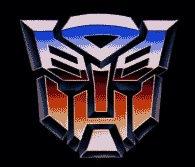
The Autobots are usually featured as the main protagonists in the Transformers multimedia franchise, and are depicted in a collection of various toys, cartoons, films, graphic novels, and paperback books first introduced in 1984. The Autobots are living robots from the planet Cybertron who, like most Transformers, are each imbued with a unique "life force" known as a "spark." Led by Optimus Prime in most stories, the Autobots believe "freedom is the right of all sentient life" and are often engaged in a civil war with the Decepticons, a faction of transformers dedicated to military conquest and usually headed by Megatron. In a mirror universe portrayed in Transformers: Shattered Glass, the Autobots are villains opposed by the heroic Decepticons.
Transformers is a media franchise produced by American toy company Hasbro and Japanese toy company Takara Tomy. It primarily follows the heroic Autobots and the villainous Decepticons, two alien robot factions at war that can transform into other forms, such as vehicles and animals. The franchise encompasses toys, animation, comic books, video games and films. As of 2011, it generated more than ¥2 trillion in revenue, making it one of the highest-grossing media franchises of all time.
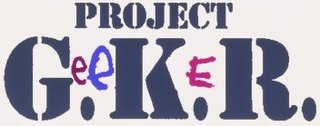
Project G.e.e.K.e.R. is an animated television series that premiered on CBS on September 14, 1996. It was created by Douglas TenNapel, creator of Earthworm Jim, and Doug Langdale, the developer of Earthworm Jim the animated series, and was a production of Columbia TriStar Television under Adelaide Productions, with original music by Shawn Patterson. TenNapel and Taylor also collaborated on the video games The Neverhood, Boombots and Skullmonkeys, and in 2005, re-united for the Nickelodeon cartoon Catscratch.
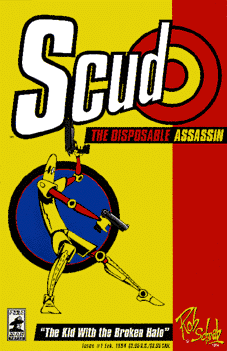
Scud: The Disposable Assassin is a humorous, hyperkinetic science fiction comic by Rob Schrab about a world in which one can buy robot assassins out of vending machines, the most popular of which are intelligent robots that kill a specified target and then self-destruct.

Creature Tech is a graphic novel, written and penciled by Doug TenNapel and published by Top Shelf Productions. Elements of the story tie in with TenNapel's previous comic book work Gear.
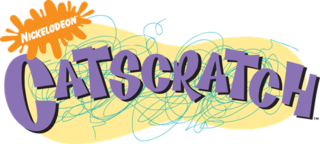
Catscratch is an American animated television series created by Doug TenNapel. It aired on Nickelodeon from July 9, 2005, to February 10, 2007. It is a loose adaptation of TenNapel's comic book series, Gear, which in the series is also the name of the cats' monster truck. The series features music composed by longtime TenNapel collaborator, Terry Scott Taylor.

Nick Magazine is a defunct American children's magazine inspired by the children's television network Nickelodeon. Its first incarnation appeared in 1990 and was distributed at participating Pizza Hut restaurants; the version of the magazine only saw two issues. The magazine returned in Summer 1993 with all types of content, primarily humor and comics. Originally published on a quarterly basis, it switched to bi-monthly with the February/March 1994 issue. It then went to ten times per year starting in March 1995, with a bi-annual December/January and June/July issue until its end in 2009.
There have been four main publishers of the comic book series bearing the name Transformers based on the toy lines of the same name. The first series was produced by Marvel Comics from 1984 to 1991, which ran for 80 issues and produced four spin-off miniseries. This was followed by a second volume titled Transformers: Generation 2, which ran for 12 issues starting in 1993. The second major series was produced by Dreamwave Productions from 2002 to 2004 with multiple limited series as well, and within multiple story continuities, until the company became bankrupt in 2005. The third and fourth series have been published by IDW Publishing with the third series starting with an issue #0 in October 2005 and a regular series starting in January 2006 to November 2018. The fourth series started in March 2019 with issue #1 and concluded in June 2022. There are also several limited series being produced by IDW as well. Skybound Entertainment began publishing Transformers comics starting in June 2023, kicking off the Energon Universe. In addition to these four main publishers, there have also been several other smaller publishers with varying degrees of success.

Dan Slott is an American comic book writer, known for his work on Marvel Comics books such as The Amazing Spider-Man, as well as She-Hulk, Silver Surfer, The Superior Spider-Man, Tony Stark: Iron Man, The Mighty Avengers, and Fantastic Four. His work for DC Comics includes the books Arkham Asylum: Living Hell and Batman Adventures.
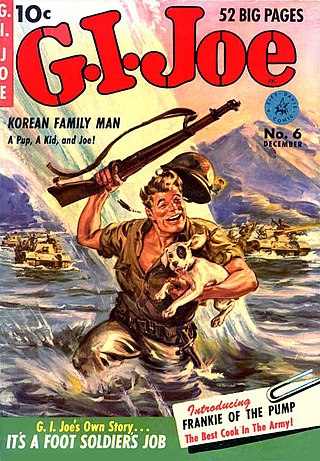
G.I. Joe has been the title of comic strips and comic books in every decade since 1942. As a licensed property by Hasbro, G.I. Joe comics have been released from 1967 to present, with only two interruptions longer than a year. As a team fighting Cobra since 1982, the comic book history of G.I. Joe: A Real American Hero has been covered by three separate publishers and four main-title series, all of which have been based on the Hasbro toy line of the same name.
Shannon Eric Denton is an American veteran storyteller and artist with credits at Cartoon Network, Warner Bros., Jerry Bruckheimer Films, NBC, Disney, Sony, ToyBiz, Marvel Entertainment, Fox Kids, Paramount Pictures, CBS, Dimension Films, DC Comics, and Nickelodeon.

Teenage Mutant Ninja Turtles (TMNT) is an American comic book series that was published by Mirage Studios between 1984 and 2014. Conceived by Kevin Eastman and Peter Laird, it was initially intended as a one-shot, but due to its popularity it became an ongoing series. The comic created the Turtles franchise of five television series, seven feature films, numerous video games, and a range of toys and merchandise.
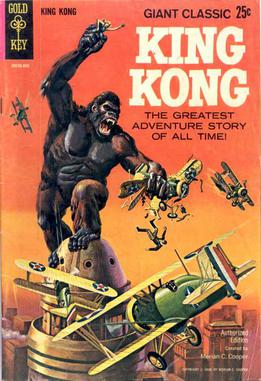
Throughout the decades King Kong has been featured in numerous comic book publications from numerous publishers.

Iron West is a steampunk Western graphic novel by American comic book creator Doug TenNapel. It was published by Image Comics in 2006.
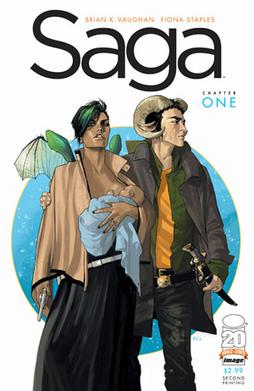
Saga is an epic space opera/fantasy comic book series written by Brian K. Vaughan and illustrated by Fiona Staples, published monthly by the American company Image Comics. The series is based on ideas Vaughan conceived both as a child and as a parent. It depicts a husband and wife, Alana and Marko, from long-warring extraterrestrial races, fleeing authorities from both sides of a galactic war as they struggle to care for their daughter, Hazel, who is born in the beginning of the series, and who occasionally narrates the series as an unseen adult.
















